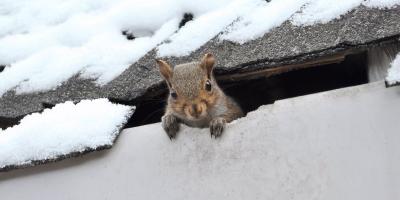Don’t Let Pantry Pests Into Your Gingerbread House

Calling all holiday construction workers! It’s almost time for you and your family to put on your Santa hats and start building a gingerbread dream home. Every frosted job site in New England starts with the same foundational ingredients, and most homes already have them stocked in the pantry. Just like any other construction project, the best advice to follow is to measure twice! Baking is truly an artform, but even the most inexperienced bakers will notice these unwanted ingredients in their measuring cups.
Common cooking and baking ingredients are often bought in serious bulk, and like anything else bought in such a way, they tend to sit around for long periods of time. Pests are defined by their instinctual recognition of any opportunity to live near a reliable food source. Pantry pests, in particular, benefit from being able to seek out some of the most reliable food sources. Luckily for them, homeowners tend to keep all of their favorite meals in one fairly secluded place. Homeowners who only bake around the holidays see the other side of this luck.
An All-Inclusive Resort For Pantry Pests
Unlike trying to cook or bake for picky members of your extended family, pantry pests will gladly dine on just about anything in the common pantry. Dried foods and ingredients that line pantry shelves, especially the holiday baking mainstays like flour, powdered milk, candy and various baking mixes, are silently ravaged by these pests. As pantries are generally used for storage in the kitchen or basement, they tend to be filled with so many things that pantry pests can enjoy a wealth of food in relative seclusion. Essentially, when you leave dried foods in your pantry for too long, you’re helping book a one-way ticket to pantry pests’ favorite resort.
Guests Checking In For The Holidays
If you haven’t baked anything since last holiday season, you will more than likely encounter the Indian meal moth snacking about your pantry. One of the most prolific pantry invaders reported throughout the United States, Indian meal moths feed on stored grains and other dried foods. What makes them such prolific pests? Their tendency to invite a very large family to the holiday feast. An adult female can lay up to 200 eggs in her lifetime. Seeing as their larvae are the culprits behind pantry food depletion, it’s best to stop this infestation immediately after finding a moth or silk webbing around food containers.
Another pest making itself at home in your pantry is the merchant grain beetle. A good sign of a merchant grain beetle infestation is damage to containers or boxes of the higher fat items like cake mixes, chocolate, rice and rolled oats. While Indian meal moths enjoy grains, the grain beetle can’t feed off of hard shelled pantry items like whole grains. A little ironic given its name, isn’t it?
Pantry Pests Aren’t Picky
While the various species of pantry pests have some dietary restrictions, most pantries have such a wide variety of foods to choose from that these pests can have their cake and eat it too, literally! Combined with the fact that there are other pests like ants and cockroaches to also be wary of, the pantry is certainly a hotbed for infestation.
We offer some helpful tips to prevent them in this blog post, but as we embark on the holiday season, it may be too late for prevention. If it’s time to call in the professionals for help, we’re ready for you. The experienced professionals at JP Pest Services can get rid of these pests quickly and completely. Contact us for a free estimate, and get to building that gingerbread house!



